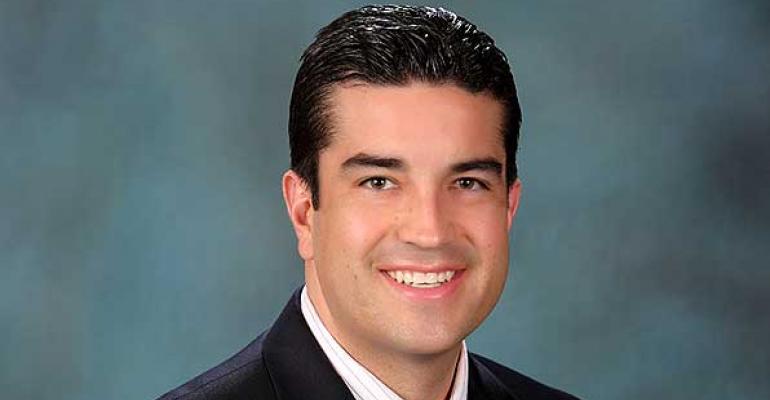 The numbers don’t lie: There’s been a considerable uptick in recent years within the party rental industry. The economy is up, fuel costs are down, and folks have more disposable income. While it’s all good news for business owners in the market, increased workloads and extra hours on the job mean increased risk potential--and that’s not good news. There are several prominent areas within a rental organization that should be evaluated for potential risk and injury. Let’s consider those that might be easy to overlook.
The numbers don’t lie: There’s been a considerable uptick in recent years within the party rental industry. The economy is up, fuel costs are down, and folks have more disposable income. While it’s all good news for business owners in the market, increased workloads and extra hours on the job mean increased risk potential--and that’s not good news. There are several prominent areas within a rental organization that should be evaluated for potential risk and injury. Let’s consider those that might be easy to overlook.
Handle with care: Lifting, pushing, pulling, and carrying properly
There’s plenty of potential for injury when it comes to the physical needs of party rental. Loading, unloading and setting up can take a lot out of a person, especially over a long period of time. Unfortunately, it only takes one bad movement to create a lifetime of problems for an employee.
Implementing and reinforcing proper handling practices should be a high priority. Though it’s pretty straightforward stuff, sometimes good technique takes a backseat to increased productivity. Don’t let that happen. There’s always a happy medium between getting things done efficiently and safely.
- Before your employees even begin their shift, it’s a good idea to encourage a warm-up routine. Consider the physiology of what the job may require, and introduce light exercises that will help prevent pulls, strains and cramps.
- Employees should test the loads they will be working with. If someone feels the load is too heavy, it is too heavy. Using a dolly or splitting the load is an easy solution.
- The old adage “lift with your legs” is one to live by--and will prevent a lot of back-related injuries. The same is true for lifting loads from an awkward position or a low level. This creates a lot of strain potential. Employees should bend at the knees instead of the waist.
- Objects that are too high also pose a risk. Lifting above the shoulders puts strain on the back and arms. In these instances, it’s best to use a step stool or similar device. It’s a good idea to evaluate equipment storage for these instances as well.
- A lot of rental equipment isn’t meant to be carried by one person. Things like stacked chairs, tables and lighting equipment can be incredibly heavy. That’s why the buddy system is essential. If something weighs more than 30 pounds, it’s handled by two people. It’s a simple rule and one that should be implemented.
Talk it out: The critical component of communication
There’s something to be said about what never was said! Oftentimes, the biggest problems go unnoticed until it’s too late. It’s important to connect with employees and encourage communication. If there is a situation that puts unnecessary stress or strain on an employee, you don’t want to find about it after someone is injured.
- Establish an open line of communication between employees and supervisors. It’s a foundational concept that often gets lost, especially when workloads increase. Employees should feel comfortable communicating issues that may arise--and that kind of reporting should be encouraged.
- Communicate safe practices and reinforce them. It doesn’t have to be a forced message, but it should exist within the corporate language: Think safe, be safe.
- Consider hiring a certified ergonomist/specialist. They are trained to identify potential hazards and provide training to improve productivity and safety.
The big picture: Proactive safety culture approach
Developing a culture of safety within your organization won’t happen overnight. It’s a calculated process that takes time and commitment. Just remember: It’s a worthy effort, and a big step toward achieving optimum productivity and a high quality work environment.
In a culture of safety, people are encouraged to provide input and take action when needed. Inaction, on the other hand, rarely leads to success. When employees are invited to share their thoughts and opinions on improving workplace safety, they add tremendous value and bring forth a true sense of empowerment, pride and ownership to any organization. When everyone gladly accepts safety as their own responsibility, consider it a huge success.
Every organization can improve upon safety, but it can only happen when owners, managers, and supervisors establish a commitment to the cause. Setting the example is critical. If good practices aren’t established at the top of the command chain, it’s hard to see how it could translate toward the folks who do the heavy lifting.
Be proactive, encourage safety and welcome your employees to have the conversations that help you improve your organization. Remember, it’s better to be safe than sorry.
John Guthrie is executive vice president of Pasadena, Calif.-based Bolton and Company, one of the largest employee-owned insurance broker agencies in the U.S., providing clients worldwide with insurance and risk management services, employee benefits and financial products.
He specializes in the rental industry, where he currently consults for many of the top party and equipment rental companies in America.



